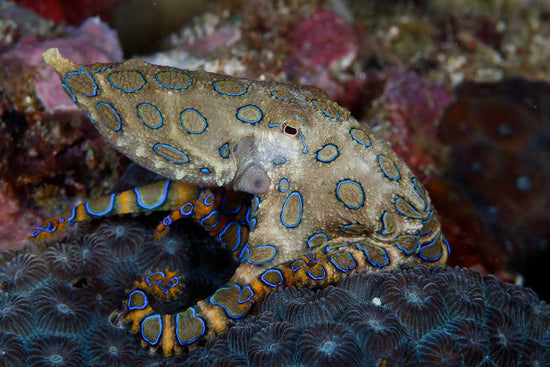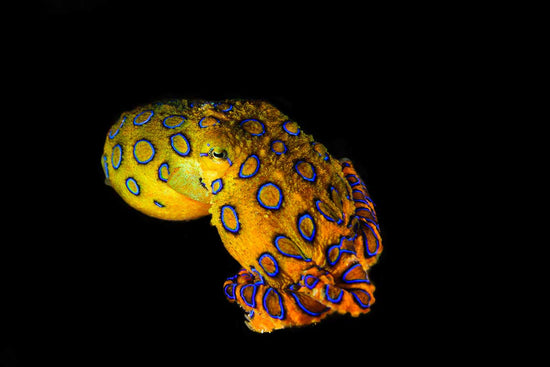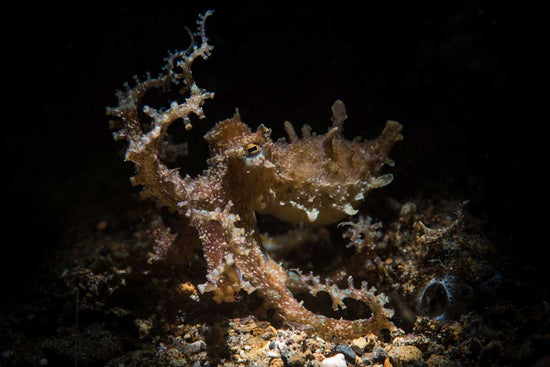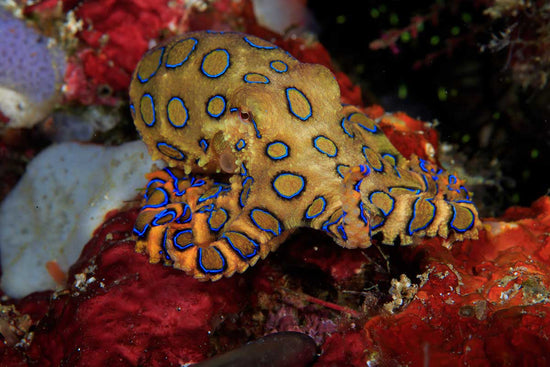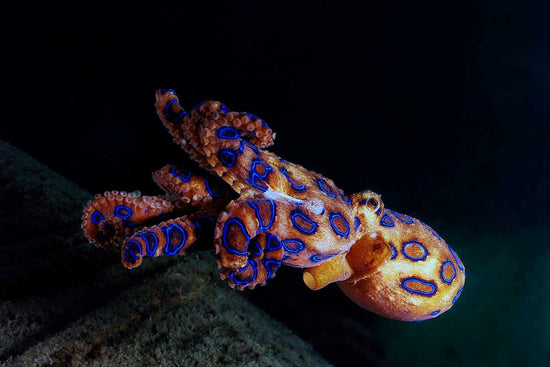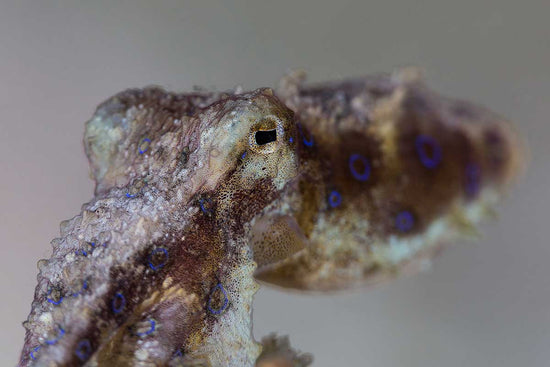Cause of the Month: Blue-Ringed Octopus
She may look cute and squishy, but don’t pick her up! Blue-ringed octopuses are one of the deadliest animals in our oceans
It’s happened before. Some well-meaning tourists innocently collect seashells and pick up trash in the shallow waters of their favorite tropical beach.
One of them turns over a seashell to find what looks like a baby octopus inside. They gently pick it up and call their friends over to admire its shiny blue rings.
It’s only when they go home and post pictures on Instagram that they find out how close to death they really came.
What they were holding was no ordinary octopus. It was a blue-ringed octopus—a tiny squirt of a cephalopod with a painless bite and enough venom to kill 26 adult humans within minutes.
The good news is that blue-ringed octopuses are not at all aggressive toward humans; most injuries occur when they’re accidentally stepped on or picked up and handled by people who don’t know better—but small fishes, crustaceans, and bivalves beware!
The brilliant blue rings that give these critters their name are actually a built-in warning system that only appears when they feel agitated, stressed, threatened, or attacked.
If the danger seems great enough, blue-ringed octopuses will use special types of skin cells, called iridophores, to make their blue rings reflect light so they look iridescent.
This type of defensive behavior is called aposematism, which is the biological equivalent of trash-talking your opponent to get them to stand down. They flash their blue rings to say, “Don’t mess with me, buddy!”
But blue-ringed octopuses never go looking for trouble. When they’re not in danger, these shy guys are typically just yellow, tan, brown, or grey with darker brown blotches or bands on their arms.
Like other octopuses, they have the ability to camouflage themselves by changing their color and pattern to match their background, so you might not even notice them when they’re just chillin’.
Blue-ringed octopuses are found in the Pacific and Indian Oceans, ranging from northern Australia to southern Japan, including Papua New Guinea, Solomon Islands, Indonesia, and the Philippines.
These reclusive bottom dwellers are most commonly found in sandy and silty areas of shallow coral reefs, tidepools, and algal beds, often hiding in rocks, crevices, empty shells, and even plastic debris, which is generally how they come into contact with humans.
Because their bite is virtually painless, a person may not know they’ve been bitten until respiratory distress or paralysis occur. Other symptoms include nausea, blindness, and heart failure.
It is possible to survive a bite from a blue-ringed octopus if artificial respiration is started immediately and continued until the toxin wears off, but it’s best to appreciate these beauties from afar.
Now, it’s important to note that all octopuses are venomous. The only reason blue-ringed octopuses get so much attention is because they’ve got the shock value of being the only ones that are deadly to humans.
The toxin they use is called tetrodotoxin, which is also used by another deadly sea creature—-the pufferfish.
Tetrodotoxin is 1,200 times deadlier than cyanide. But it’s not produced by the octopuses themselves; it’s produced by a certain type of bacteria that lives in their salivary glands and is present throughout their bodies, from their hearts to their gills.
When females lay their eggs, they inject them with venom to create a seed colony of this bacteria that forms a symbiotic relationship with the unhatched octopuses to ensure they’re just as deadly as their parents when they hatch.
There may up to 10 species of blue-ringed octopus in the genus Hapalochlaena, but only four of them have been officially named:
The greater blue-ringed octopus (H. lunulata) isn’t larger or better than the other species listed here; the “greater” part of its name comes from the fact that it’s got the largest blue rings
The southern blue-ringed octopus (H. maculosa) is the biggest of the bunch, reaching lengths of up to eight inches; all other species reach maximum lengths of two to four inches
The blue-lined octopus (H. fasciata) has rings on its arms as well as lines on its head (or mantle, if you want to get technical)
H. nierstraszi is the only species that hasn’t yet been given a common name; only two of them have been caught in all of recorded history! This may mean they’re either naturally rarer or simply more reclusive than other species
All four species hunt using a “pouncing” technique. This means they lie in wait or approach their prey ever-so-slowly until they are within striking distance. Then, with a startling burst of speed, they attack from above and quickly wrap their arms around their prey.
Using their suckers to keep a firm grip, they draw the prey close to their mouth and pierce them with their beak to deliver a dose of paralyzing venom that acts almost instantly. Once their prey is paralyzed, they inject digestive juices that help soften up the meat before extracting it.
No species of blue-ringed octopus are considered endangered at this time and, because their habitat is so expansive, it’s thought that they are not facing any direct environmental pressures either.
However, degradation of inshore habitats like the ones where blue-ringed octopuses are found is well documented and can easily become a threat without oversight.
The blue-ringed octopus’s psychedelic coloring and lethal reputation has also sparked growing interest from exotic animal collectors who want them as pets. Imports have skyrocketed from just 11 in 2004 to more than 1,100 in 2011 in the U.S. alone.
Octopuses are world-renowned escape artists, which makes keeping them as pets an extreme challenge. But their gorgeous coloring and lethal nature make them less than ideal for home aquariums, especially when children are present or owners are uninformed.
Blue-ringed octopuses also have a short lifespan—one to two years—and females only reproduce once before they die. They aren’t very hardy and don’t fare well during shipment. Many die within days or weeks of purchase, which means committed collectors would have to purchase new animals frequently.
Even moderate increases in demand could lead to overfishing. Over time, sustained pressure could impact their populations and become a concern for conservationists.
That’s why ocean conservation and education are so important. The more we understand about our planet and the animals we share it with, the better we can appreciate, respect, and protect them.
Shop our limited edition Blue-ringed Octopus Awareness Bracelets to pull a pound of trash from the ocean and help raise awareness about the importance of teaching people how to safely and respectfully love the ocean and all the wonderful creatures that call it home.
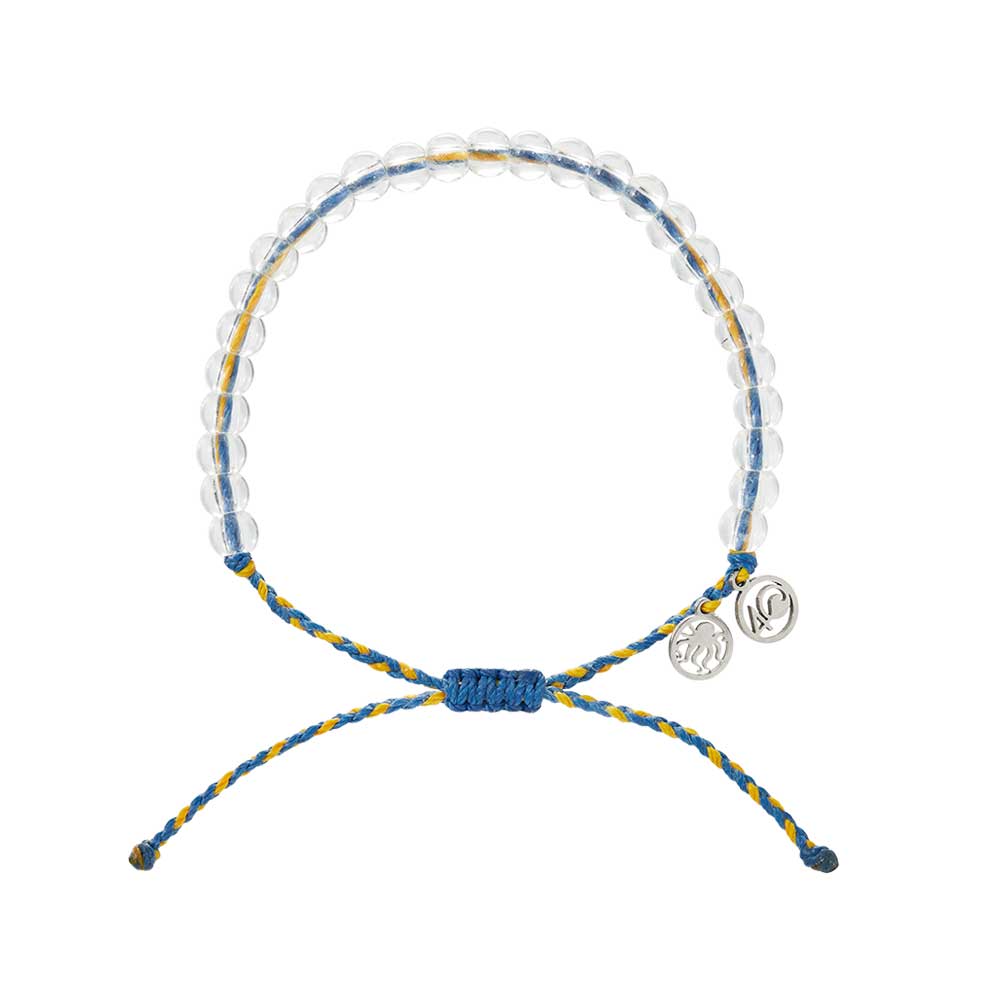
Blue-ringed Octopus Awareness Bracelets
By purchasing this limited edition bracelet, you will pull one pound of trash from the world’s oceans, rivers, and coastlines.

